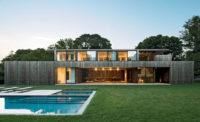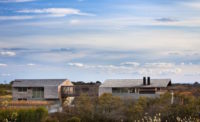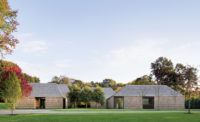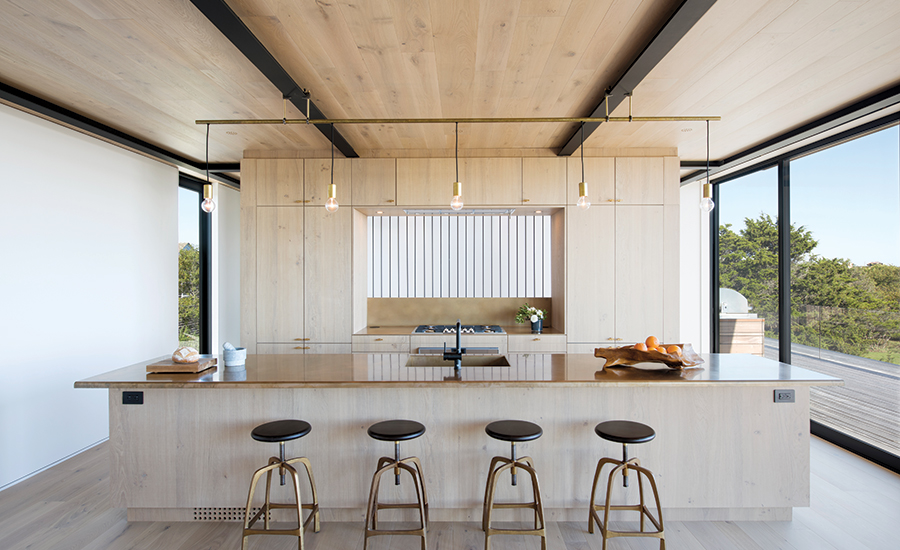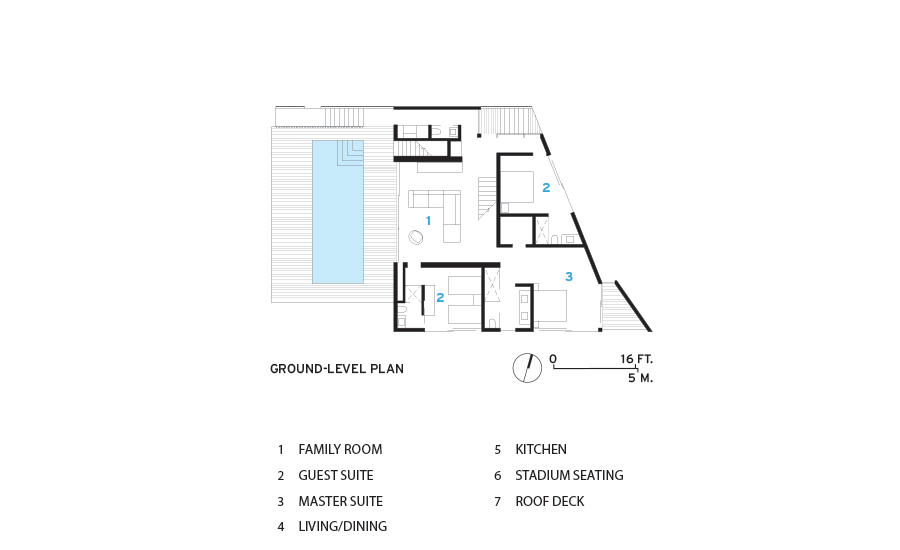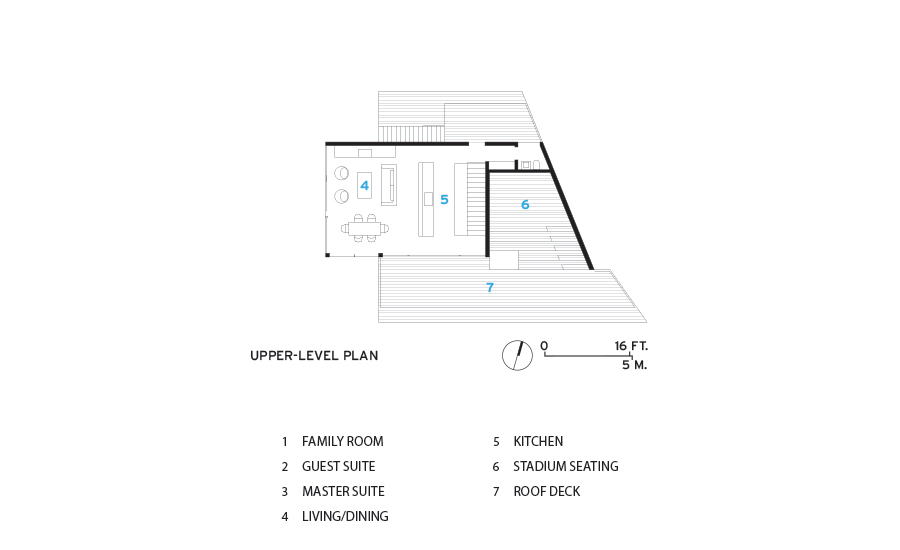Amagansett Residence by Bates Masi + Architects
East Hampton, New York

The house’s cantilevered second floor provides a lookout post in a nod to the historic Life-Saving Station nearby, which inspired the home’s cladding and views.
Photo courtesy Bates Masi + Architects

The house’s cantilevered second floor provides a lookout post in a nod to the historic Life-Saving Station nearby, which inspired the home’s cladding and views.
Photo courtesy Bates Masi + Architects

In the combination kitchen/living/dining area, a 13-foot island defines zones without obstructing the vistas.
Photo courtesy Bates Masi + Architects

Image courtesy Bates Masi + Architects

Image courtesy Bates Masi + Architects





Architects & Firms
To Long Island locals, the Amagansett Life-Saving Station in East Hampton is a beloved landmark. From 1902 to 1946, members of the U.S. Coast Guard patrolled the Atlantic coastline from the station, which sits 30 feet above sea level, searching for shipwreck victims. Earlier this year, the cedar-shingled structure was opened to the public as a museum. (Residents already had been gathering there annually to reenact a foiled 1942 beach landing of Nazi spies.)
Additional Content:
Jump to credits & specifications
Now Bates Masi + Architects has built a tribute across the street: a 2,300-square-foot vacation home for a couple from the West Coast. Like the landmark, the new residence is clad in cedar shingles and features expansive ocean views. (Before starting construction, the Bates Masi team erected a 20-foot scaffold on the half-acre site to ensure that vistas would be equally sweeping.)
But resemblances to the landmark end there, to give way to eloquent abstractions. “This project is more reinterpretation than mimicry, so the similarities are not immediately apparent but become clear with exploration,” says studio principal Paul Masi.
Foremost among those comparisons is the plan. Inspired by the oceanfront vigils of yore, architects placed common areas on the second floor so the homeowners could spend much of their time as the watchmen did—immersed in the seascape. “There is a similar sequencing of levels up to the lookout,” Masi says. And whereas the Life-Saving Station sports a cupola, which extended the watchmen’s sightlines, Bates Masi cantilevered the home’s 700-square-foot upper story beyond the wider volume beneath it, and finished its west and south elevations entirely in glass.
The kitchen plays a critical role in this view-finding scheme, as it draws the homeowners into the upper volume. Measuring 30 by 21 feet, it is accessible by a stair that abuts it. A 13-foot island provides informal seating and a low partition between the kitchen and adjacent living and dining areas. The fact that the room’s finishes echo the home’sarchitecture makes it seem even more spacious. Mitered cabinet doors are fabricated from the same European oak as the plank floors and ceiling. Bronze plate on the backsplash mimics the facade’s bronze accents.
The flipped floor plan—requiring occupants to head upstairs to dine and downstairs to sleep—is a compromise for the homeowners, Masi says: “You’re walking up and down stairs quite a bit.” To mitigate that inconvenience, the architects transformed the first-floor rooftop into a 1,000-square- foot garden with expansive decking, stadium seating, and an exterior stair to the kitchen. “Most people prefer a connection between living and outdoor spaces,” he says. Connection reestablished.
CreditsArchitect: Paul Masi, Danielle Caylor
Engineer: Steven Maresca
General contractor: K. Romeo |
SpecificationsCabinetry Peragine Millwork
Faucets Blanco
Paints and stains Benjamin Moore
Countertop Corian
Wood cladding Madera-Trade
Bar stools Room
Recessed lights Hevi Light
Dimming Lutron |

